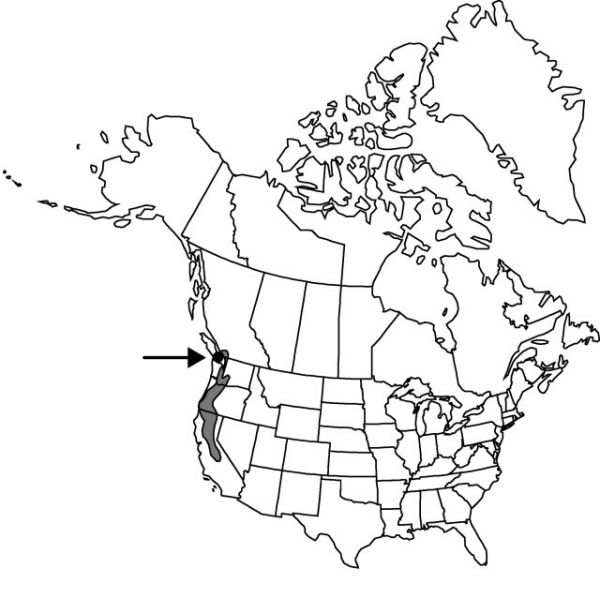Difference between revisions of "Brodiaea coronaria subsp. coronaria"
Endemic
Basionym: Brodiaea howellii Eastwood 1938
Synonyms: Brodiaea grandiflora Smith Brodiaea synandra (A. Heller) Jepson
FNA>Volume Importer |
imported>Volume Importer |
||
| (6 intermediate revisions by 2 users not shown) | |||
| Line 1: | Line 1: | ||
{{Treatment/ID | {{Treatment/ID | ||
|accepted_name=Brodiaea coronaria subsp. coronaria | |accepted_name=Brodiaea coronaria subsp. coronaria | ||
| − | |accepted_authority= | + | |accepted_authority= |
|publications= | |publications= | ||
| − | |basionyms={{Treatment/ID/ | + | |special_status={{Treatment/ID/Special_status |
| + | |code=E | ||
| + | |label=Endemic | ||
| + | }} | ||
| + | |basionyms={{Treatment/ID/Basionym | ||
|name=Brodiaea howellii | |name=Brodiaea howellii | ||
|authority=Eastwood | |authority=Eastwood | ||
| + | |rank=species | ||
| + | |publication_title= | ||
| + | |publication_place=1938 | ||
}} | }} | ||
|synonyms={{Treatment/ID/Synonym | |synonyms={{Treatment/ID/Synonym | ||
|name=Brodiaea grandiflora | |name=Brodiaea grandiflora | ||
|authority=Smith | |authority=Smith | ||
| − | }}{{Treatment/ID/Synonym | + | |rank=species |
| + | }} {{Treatment/ID/Synonym | ||
|name=Brodiaea synandra | |name=Brodiaea synandra | ||
|authority=(A. Heller) Jepson | |authority=(A. Heller) Jepson | ||
| + | |rank=species | ||
}} | }} | ||
|hierarchy=Liliaceae;Brodiaea;Brodiaea coronaria;Brodiaea coronaria subsp. coronaria | |hierarchy=Liliaceae;Brodiaea;Brodiaea coronaria;Brodiaea coronaria subsp. coronaria | ||
| Line 28: | Line 37: | ||
|elevation=0–1600 m | |elevation=0–1600 m | ||
|distribution=B.C.;Calif.;Oreg.;Wash. | |distribution=B.C.;Calif.;Oreg.;Wash. | ||
| − | |discussion=<p>Subspecies coronaria, like Brodiaea elegans subsp. elegans, is very widespread and grows well in a variety of conditions. It is found primarily in the grasslands of California valleys and in the prairies of western Oregon and Washington. The 2n = 12 populations are found in the northern (Oregon and Washington) and southern (central California) parts of the range, while the 2n = 24 populations are found in the middle part of the range (northern California and southern Oregon).</p> | + | |discussion=<p>Subspecies coronaria, like <i>Brodiaea elegans </i>subsp.<i> elegans</i>, is very widespread and grows well in a variety of conditions. It is found primarily in the grasslands of California valleys and in the prairies of western Oregon and Washington. The 2n = 12 populations are found in the northern (Oregon and Washington) and southern (central California) parts of the range, while the 2n = 24 populations are found in the middle part of the range (northern California and southern Oregon).</p> |
|tables= | |tables= | ||
|references= | |references= | ||
| Line 37: | Line 46: | ||
-->{{#Taxon: | -->{{#Taxon: | ||
name=Brodiaea coronaria subsp. coronaria | name=Brodiaea coronaria subsp. coronaria | ||
| − | + | |authority= | |
| − | |authority= | ||
|rank=subspecies | |rank=subspecies | ||
|parent rank=species | |parent rank=species | ||
| Line 51: | Line 59: | ||
|publication title= | |publication title= | ||
|publication year= | |publication year= | ||
| − | |special status= | + | |special status=Endemic |
| − | |source xml=https:// | + | |source xml=https://bitbucket.org/aafc-mbb/fna-data-curation/src/2e0870ddd59836b60bcf96646a41e87ea5a5943a/coarse_grained_fna_xml/V26/V26_647.xml |
|genus=Brodiaea | |genus=Brodiaea | ||
|species=Brodiaea coronaria | |species=Brodiaea coronaria | ||
Latest revision as of 21:16, 5 November 2020
Corm coat heavily fibrous. Scape 5–25 cm. Flowers: perianth bluish violet or bluish purple, tube 6–13 cm, lobes 15–25 mm; anther apex hooked; staminodia white; ovary 8–9 mm; style 9–11 mm. 2n = 12, 24, 42.
Phenology: Flowering spring (Apr–Jun).
Habitat: Grasslands, volcanic mesas
Elevation: 0–1600 m
Distribution

B.C., Calif., Oreg., Wash.
Discussion
Subspecies coronaria, like Brodiaea elegans subsp. elegans, is very widespread and grows well in a variety of conditions. It is found primarily in the grasslands of California valleys and in the prairies of western Oregon and Washington. The 2n = 12 populations are found in the northern (Oregon and Washington) and southern (central California) parts of the range, while the 2n = 24 populations are found in the middle part of the range (northern California and southern Oregon).
Selected References
None.
Lower Taxa
None.